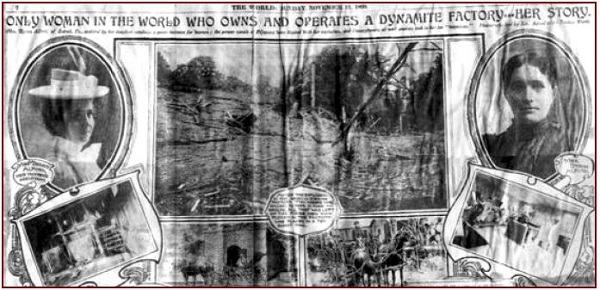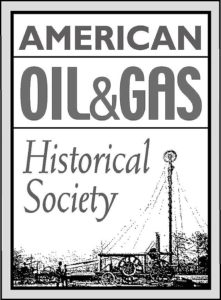by Bruce Wells | Nov 4, 2025 | Petroleum Pioneers
Astute businesswoman prospered in booming Pennsylvania and New York oilfields.
In 1899, Mary Byron Alford, the “Only Woman in the World who Owns and Operates a Dynamite Factory,” prospered in the midst of America’s first billion-dollar oilfield. Mrs. Alford’s oilfield nitro factory cooked 3,000 pounds of nitroglycerin every day.
The 85,000-acre Bradford oilfield in north-central McKean County, Pennsylvania, and south-central Cattaraugus County, New York, remains an important part of U.S. petroleum heritage. There are many reasons, including Mary Alford’s pioneering oilfield career at the turn of the century.

Penn-Brad Oil Museum Director Sherri Schulze in 2005 exhibited a laminated (though wrinkled) newspaper article from 1899. “This was done by a student many years ago,” she said. “It was a school project done by one of Mrs. Alford’s descendants.”
(more…)
by Bruce Wells | Nov 4, 2025 | Petroleum Pioneers
New resource for making kerosene for lamps created the U.S. petroleum industry.
America’s petroleum exploration and production industry began in the mid-19th century when a lumber company sold 105 acres along a creek known for natural oil seeps.
On November 10, 1854, the lumber firm of Brewer, Watson & Company sold a parcel of the company’s land at the junction of the east and west branches of Oil Creek southeast of Titusville, Pennsylvania. (more…)
by Bruce Wells | Nov 1, 2025 | Petroleum Transportation
Early autos shared unpaved roads with horses and wagons.
The first U.S. auto show opened in New York City’s Madison Square Garden in 1900, just five years after Charles Duryea claimed the first American patent for a gasoline-powered automobile. Gas proved to be the least popular source of engine power.
(more…)
by Bruce Wells | Oct 31, 2025 | Petroleum Pioneers
Giant oilfield discovery at Hobbs in 1928 launched the New Mexico petroleum industry.
“It was desolate country: sand, mesquite, bear grass, and jackrabbits. Hobbs was a store, a small school, a windmill, and a couple of trees.” — A New Mexico roughneck.
Although the Hobbs discovery came six years after the first oil production (seven years after the first natural gas well), petroleum geologists soon called it the most important single oil find in New Mexico history.
Spudded in late 1927, the Midwest State No. 1 well saw its first signs of oil on June 13, 1928, and the wildcat well was completed November 18 at a depth of 4,065 feet to produce 600 barrels of oil per day. It had been a long journey revealing the giant Hobbs field. (more…)
by Bruce Wells | Oct 29, 2025 | Petroleum Pioneers
19th-century “Smoky City” skies cleared when factories replaced coal with natural gas.
In 1878, the Haymaker brothers discovered a Pennsylvania natural gas field near Pittsburgh – and laid the foundation for many modern petroleum companies.
Like many young men of their time, Michael Haymaker and his brother Obediah sought to make their fortunes in Pennsylvania’s booming petroleum industry. They left their Westmoreland County farm to seek work in the oilfields. (more…)


